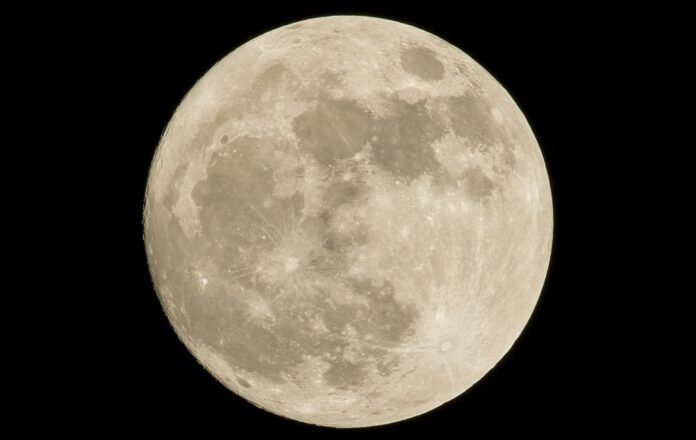
An immense object once collided straight into the young Earth. The biggest piece that detached formed our moon. But exactly when did that happen? It remained a mystery for a long time. New research casts light on the matter: the moon has been around for 40 million years longer than previously thought.
Ancient Crystals Reveal the Moon’s Age
This conclusion comes after examining the crystals brought back by the Apollo astronauts in 1972 from the moon. It hints at the moon being at least 4.46 billion years old. “These crystals are the oldest known solids that formed after the huge impact. As we know how old these crystals are, they serve as an anchor for the moon’s timeline,” says Philipp Heck, a professor at the University of Chicago.
A Cooled Magma Ocean
When the object, as large as Mars, hit Earth and formed the moon, the rock that would eventually make up the moon’s surface melted due to the energy of the impact. “When the surface was melted in this way, zircon crystals couldn’t form or survive. Therefore, all crystals on the lunar surface must have formed after this magma ocean on the moon had cooled,” explains Heck. “Otherwise, they would have melted and their chemical signature would have been destroyed.”
Crystals Unveiling the Moon’s Age
Because the crystals only formed after the magma had cooled, the age of the zircon crystals reveals the moon’s minimum age. There was an estimate already, but this new study is the first to use an analytical method called atom probe tomography, which can determine the age of the moon crystals with greater precision.
A Very Special Pencil Sharpener
“With atom probe tomography, we start by honing a piece of lunar dust to create a sharp point. We use a focused ion microscope for this, which is a sort of ultra-modern pencil sharpener,” explains researcher Jennika Greer. “Then we used UV lasers to make atoms evaporate from the surface of this point. The atoms then move through a mass spectrometer and the speed at which this happens tells us how heavy they are, providing insights into their composition.”
Analyzing Atoms to Determine Age
It involves looking at each atom, showing how many atoms in the zircons have undergone radioactive decay. When atoms have an unstable configuration of protons and neutrons in their nucleus, decay happens. They then lose some of these protons and neutrons and transform into different elements. Uranium, for instance, decays into lead. Scientists have worked out how long this process takes, hence enabling them to ascertain a sample’s age based on the ratio of uranium and lead atoms (isotopes).
Just Like an Hourglass
“Radiometric dating works a little like an hourglass,” says Heck. “In an hourglass, sand flows from one glass to another. The elapsed time becomes apparent from the amount of sand in the bottom glass cylinder. Radiometric dating works the same way, except you count the number of mother atoms and the number of daughter atoms they have transformed into. The duration can then be calculated because the transformation rate is known.”
Moonevity Unveiled
Using this method, researchers were finally able to deduce how old the moon is. The concentration of lead isotopes pointed to the lunar dust being approximately 4.46 billion years old. The moon itself is thus at least that old and this is 40 million years older than initially believed. “It’s amazing that we could demonstrate that this is the oldest piece of moon we’ve found so far. It’s a cornerstone for so many questions about Earth. If you know how old something is, you can much better estimate what happened in its history,” explains Greer.
24 Hours in a Day
Knowing when the moon formed is inherently important, as the moon plays a crucial part in our solar system. “It stabilizes Earth’s rotation axis. It’s why we have 24 hours in a day; it’s why we have tides. Without the moon, life on Earth would appear different. It forms part of our natural system that we aim to better understand, and our study contributes a small puzzle piece to the grand picture,” concludes Heck.











